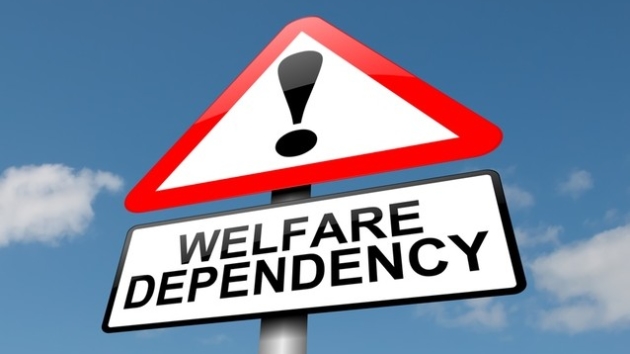Are welfare recipients becoming Florida’s “new middle class”?
In 1995, the CATO Institute published a groundbreaking study, The Work vs. Welfare Trade-Off, which estimated the value of the full package of welfare benefits available to a typical recipient in each of the 50 states and the District of Columbia.
It found that not only did the value of such benefits greatly exceed the poverty level but, because welfare benefits are tax-free, their dollar value was greater than the amount of take-home income a worker would receive from an entry-level job.
Since then, many welfare programs have undergone significant change, including the 1996 welfare reform legislation that ended the Aid to Families with Dependent Children program and replaced it with the Temporary Assistance to Needy Families program administered by the US Department of Health and Human Services.
The CATO Institute examined the current welfare system in the same manner as the 1995 paper in their The Work vs. Welfare Trade-Off: 2013 report.
According to CATO, “Welfare benefits continue to outpace the income that most recipients can expect to earn from an entry-level job, and the balance between welfare and work may actually have grown worse in recent years.”
“The current [2013] welfare system provides such a high level of benefits that it acts as a disincentive for work,” states the CATO report.
CATO Institute Senior Fellow Michael D. Tanner discusses his latest report on welfare:
Welfare currently pays more than a minimum-wage job in 35 states, even after accounting for the Earned Income Tax Credit, and in 13 states it pays more than $15 per hour. If Congress and state legislatures are serious about reducing welfare dependence and rewarding work, they should consider strengthening welfare work requirements, removing exemptions, and narrowing the definition of work.
The top ten states where welfare payments have increased are: 1. Hawaii, 2. District of Columbia, 3. Massachusetts, 4. Connecticut, 5. New Jersey, 6. Rhode Island, 7. New York, 8. Vermont, 9. New Hampshire and 10. Maryland. For those wondering, California is ranked number eleven. Florida ranks 46th. Mississippi is ranked last.
CATO recommends, “[S]tates should consider ways to shrink the gap between the value of welfare and work by reducing current benefit levels and tightening eligibility requirements.”
In 1995 Florida ranked 30th in the nation with a pre-tax welfare wage equivalent of $18,200 or an hourly wage of $8.75. In 2013 Florida ranks 46th in the nation with a pre-tax welfare wage equivalent of $12,600 or an hourly wage of $6.06.
However, Florida ranks 9th in providing Supplemental Nutrition Assistance Program (SNAP) cards, with a monthly benefit of $526 or $6,312 annually. Florida is ranked 16th in providing housing benefits, with a urban monthly benefit of $1,095 and a non-urban benefit of $814. Florida housing benefits average monthly $955 or $11,455 annually.
In Medicaid benefits Florida ranks 48th with an annual expenditure of $6,196, which is the equivalent of an insurance premium of $6,408. Percent of TANF Households Receiving Housing Assistance in Florida in 1995 was 17.4%, today it is 7.7%. TANF adult recipients participating in work activities in Florida is 54.2%.
In terms of welfare benefits packages with housing included for all states Florida ranks 26th overall. In Florida for 2013 the benefits add up to $29,576 or an increase over the original 1995 package adjusted for inflation of $3,484. Florida is 45th in utilities assistance at $19 a month or $225 a year. For the Women, Infants, and Children Program Florida ranks 20th with a monthly payment of $90, annual payment of $1,077.
The bottom line:
Florida pays out in welfare benefits: TANF – $3,636, SNAP – $ 6,312, Housing – $11,455 (avg.), Medicaid – $6,196, WIC – $1,077, LIHEAP – $600, TEFAP – $300 for a total of $29,576.
The median salary in Florida is $30,695.
Welfare is now a big government business paying more than entry level jobs in 70% of the states. Since Congress enacted welfare reform in 1994, America has become more of the welfare nation.
Milton Friedman wrote, “One of the great mistakes is to judge policies and programs by their intentions rather than their results.”
Is Florida is on the path with the result that it will become a “welfare state”?
RELATED:
Video: Surprise: Welfare Cheats Get Rich!
Gallup: 18% Rate U.S. Economy As Good or Excellent
Video: The great food stamp binge


